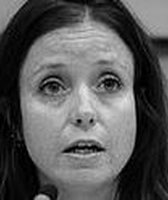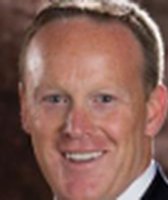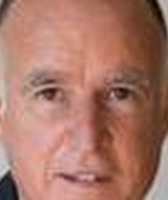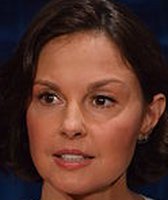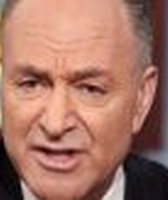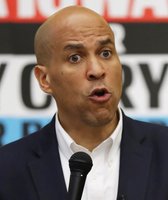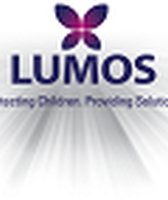Stand up for the facts!
Our only agenda is to publish the truth so you can be an informed participant in democracy.
We need your help.
I would like to contribute
Donald Trump’s foreign policy chops were once again mocked when he seemed to forget about one of the major geopolitical developments of recent years: Russia’s 2014 intervention in Ukraine. Or did he?
"He’s not going into Ukraine, Okay? Just so you understand. He's not going to go into Ukraine, all right? You can mark it down and you can put it down, you can take it anywhere you want," Trump said July 31 in an interview with ABC’s George Stephanopoulos.
"Well, he's already there, isn't he?" Stephanopoulos pointed out.
"Okay, well, he's there in a certain way, but I'm not there yet," Trump responded. "You have Obama there. And frankly, that whole part of the world is a mess under Obama, with all the strength that you're talking about and all of the power of NATO and all of this, in the meantime, he's going where — he takes, takes Crimea, he's sort of — I mean. …The people of Crimea, from what I've heard, would rather be with Russia than where they were."
Many news outlets interpreted this as Trump’s ignorance. But it’s not entirely clear if the ridicule is completely warranted.
After all, Trump seemed pretty aware of this widely reported fact, tweeting in 2014, "Russia is on the move in the Ukraine" and calling Putin’s grab "so smart" in a Fox News interview, as Buzzfeed has reported.
So we’re not putting Trump’s statements on the Truth-O-Meter, but we did want to examine Russia’s presence in Ukraine more in-depth. Let’s brush up on some modern Eastern European history.
Crimea annexation, a primer
It is clear that Putin did, in fact, go into Ukraine in 2014. Following the ousting of Ukraine’s pro-Russia president Viktor Yanukovych, Russian forces invaded the eastern territory of Crimea and officially absorbed it into the Russian Federation.
The peninsula has the largest concentration of Russian-speakers in the country and was actually part of Russia until 1954, when Soviet Premier Nikita Khrushchev transferred it to Ukraine. Following the collapse of the U.S.S.R. in 1991 and Ukraine gaining autonomy, many expected Russian President Boris Yeltsin to take Crimea, but it remained part of Ukraine.
In 2004, Yanukovych (who hired Trump’s campaign chair Paul Manafort as a consultant) was declared the winner in Ukraine’s presidential elections. But allegations of election fraud and a series of pro-democracy protests dubbed the Orange Revolution led the results to be invalidate and opposition leader Viktor Yushchenko became president. But Yanukovych came into power six years later, winning the presidency in 2010.
As Yanukovych moved closer and closer to Russia, demonstrations began popping up over all over the country, swelling to 800,000 protesters in Kiev in December 2013 and growing violent and deadly in early 2014. After signing a compromise deal with opposition leaders, Yanukovych disappeared in late February 2014, prompting Parliament to remove him from power and issue a warrant for his arrest.
Then, Russia entered the fray, first sending in thousands of unidentified soldiers before publically making a land grab. Following a referendum in Crimea to secede from Ukraine and join Russia, Putin claimed Crimea for Russia. (The West has questioned whether the referendum was valid.) In this sense, Trump’s comments actually echo the official Kremlin position that Crimea is now Russian and its citizens prefer it that way.
But of course, Putin didn’t exactly pack up his troops and say "do svidaniya."
Pro-Russian unrest
Following the Crimean crisis, pro-Kremlin rebels in Donetsk and Luhansk declared independence from Ukraine in May 2014, prompting military action from Kiev. That fighting has yet to subside.
Ukrainian officials repeatedly accused Russia of sending fighters and weapons to aid the separatists — a claim repeatedly denied by Putin but backed by U.S. intelligence officials, NATO, the United Nations and Russian opposition leaders.
Russian pulled some of its forces back after Kiev and the separatists negotiated a truce in September 2014, according to NATO. But that never really amounted to an actual ceasefire and two months later, NATO reported Russian military equipment and combat troops entering Ukraine (the Kremlin again denied this).
Despite a second ceasefire agreement that required the removal of Russian forces, 2015 began with intense fighting and evidence of Russia’s involvement mounted through the year. In December, Putin himself owned up to the presence of Russian military specialists, but insisted there were no regular troops in Ukraine.
"If the Russians had removed (all their forces), wouldn’t everyone say so? Wouldn’t the Russians be trumpeting that they’ve lived up to the deal? They don’t," said Stephen Sestanovich, a Russian expert at the Council on Foreign Relations. "All they say is that they don’t have to yet because the Ukrainians haven’t done their bit yet."
Continued presence in Ukraine
Today, the situation in Ukraine remains unstable and fraught with human rights abuses, according to United Nations and human rights groups. Kiev maintains that Russia is continuing to send more tanks and military equipment into Ukraine, while the Kremlin continue to deny it.
Russia sends troops into Ukraine "when it perceives that the Ukrainian military is poised to achieve significant success against the separatists," said Harley Balzer, a Georgetown University professor who specializes in Russian politics. "Russia's goal appears to be to ‘keep the pot boiling’ and prevent the government in Ukraine from successfully stabilizing the situation."
By July 2016, Russian troops had pulled back from the front line, though Russian commanders of small groups of fighters remained in the country, according to the International Crisis Group, a NGO that researches violence around the world.
The Organization for Security and Cooperation in Europe, which monitors the conflicts in Ukraine, told us it’s observed traces of tracked vehicles move across the border and large amounts of weapons moving into Donetsk and Luhansk. Though it hasn’t directly observed Russian troops crossing the border, pro-Russian separatists often prevent its unarmed officers from accessing bases and areas where soldiers and equipment may go.
At the very least, Russia has posted a combat ship on a long-standing Russian naval base in Crimea and, according to the U.S .State Department, has also installed troops in the annexed territory.
But the United States — and really the rest of the world — maintains that Crimea should still be considered part of Ukraine, so if Russian troops are in the Crimea, they are in Ukraine.
"Virtually nobody makes or buys the argument" that Putin isn’t in Ukraine because Crimea is part of Russia, according to Sestanovich. "Even the Chinese are deeply concerned about the precedent of changing borders by force," Balzer said.
"Crimea is and always will remain part of Ukraine," State Department spokesman John Kirby said July 27. "We’re not going to allow, as we’ve said many times before, the borders of Europe to be redrawn at the barrel of a gun."
But Trump doesn’t seem as committed to this position. When asked if his administration would recognize Crimea as Russian territory and lift U.S. sanctions, Trump replied, "We would be looking at that."
Our Sources
ABC, This Week, July 31, 2016
PolitiFact, "Why Crimea matters to Russia," March 2, 2014
PolitiFact, "Paul Manafort, Donald Trump’s top adviser, and his ties to pro-Russian politicians in Ukraine," May 2, 2016
PunditFact, "Bill Kristol says Ukraine's 2004 revolution was the first 'color revolution'," Feb. 23, 2014
PunditFact, "'Hardball' host Chris Matthews says Russian troops aren't wearing uniforms in Ukraine," March 4, 2014
PolitiFact, "A guide to the developments in Ukraine," March 19, 2014
International Crisis Group, "Ukraine: The Line," July 18, 2016
Email interview with Harley Balzer, professor at Georgetown University, Aug. 2, 2016
Email interview with Stephen Sestanovich, analyst at the Council on Foreign Relations, Aug. 3, 2016
Email interview with the Organization for Security and Cooperation in Europe press office, Aug. 3, 2016


